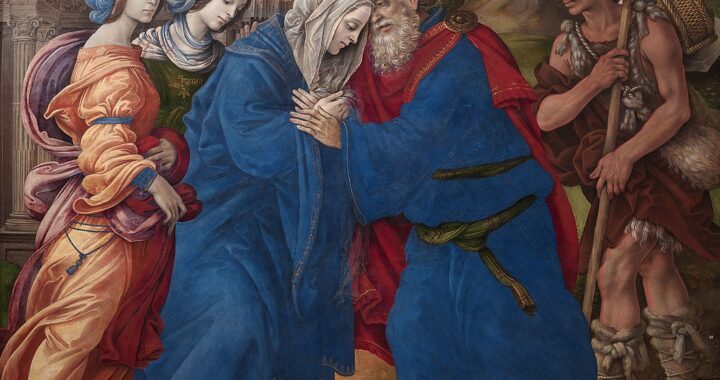
at the Church of the Holy Cross in Łomża
All images are from Wikimedia Commons
Images of the Sacred Heart of Jesus, as revealed in the visions of Saint Margaret Mary Alacoque, might never have spread all over the world if the Jesuit priest Saint Claude de la Colombière had not acknowledged the value of the young nun’s mystical experiences. In the same way, Catholics everywhere can thank the Polish priest Blessed Michał Sopoćko for recognizing truth in the visions of the young nun Maria Faustyna Kowalska—and for what he did with her visions.
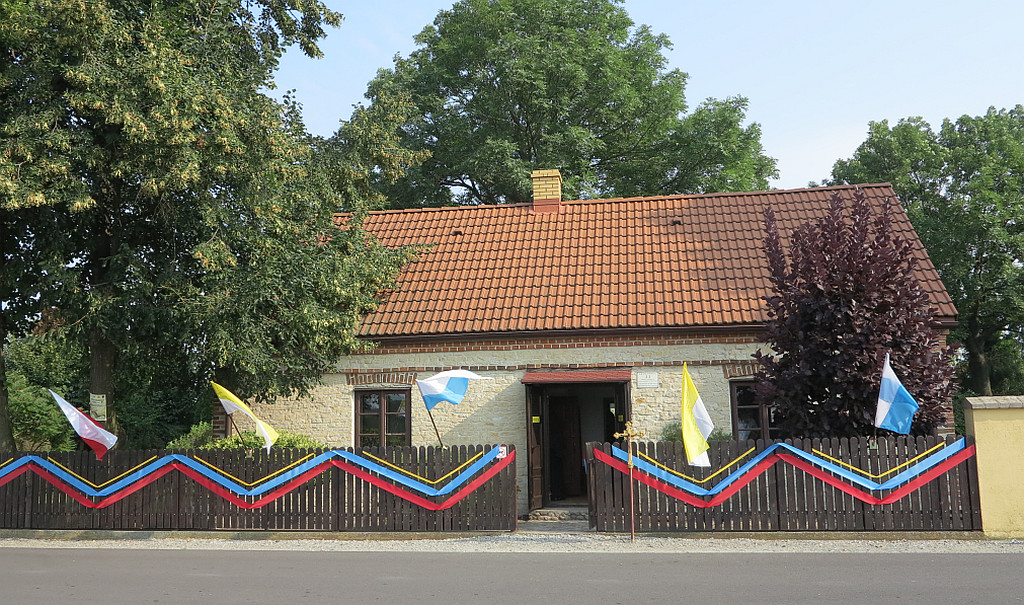
Helena Kowalska was born in the village of Głogowiec, Poland, in 1905, the third of ten children. From a young age, she was remarkably obedient, hard-working, and sensitive to the needs of others. Her parents were farmers, so she was needed at home and only attended school for a few semesters. She was also notably prayerful, and, at the age of sixteen, she asked for their permission to enter a convent. They refused, citing the lack of money for a dowry. Helena obediently left home to work as a servant in nearby towns, and she sent money back to financially assist her large family.

Helena seemed a happy young woman, and her good nature endeared her to her employers. But one evening as she was at a dance, our Lord appeared before her, covered with wounds. He asked her the heart-wrenching question, “How long shall I put up with you and how long will you keep putting Me off?” (Interestingly, she was not the first future mystic whom Jesus called to religious life in such a dramatic fashion.) Cut to the heart, Helena left immediately for Warsaw with nothing but the clothes on her back, looking everywhere for a convent that would accept her. After working for a time to earn the money required for admittance, she became a religious sister with the Sisters of Our Lady of Mercy and took the name in religious life of Maria Faustyna of the Blessed Sacrament.
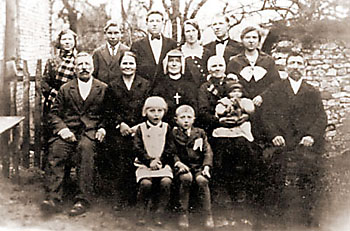
Her parents were apparently soon reconciled with their devout daughter’s choice.
The Sisters of Our Lady of Mercy had several communities, generally homes for “troubled” women and girls who had repented of their past way of life and needed the sisters’ help. As Sister Faustyna, the young sister served as gardener, cook, and porter for her community. She also strove to perform her lowly duties while remaining in God’s presence. The other sisters noticed Faustyna’s recollection, as well as her serenity and kindness.
But they also noticed her poor health. Faustyna was constantly sick and in pain, though she tried to remain cheerful and fulfill her chores. Doctors often ordered her to spend long periods in bed and in hospitals to recuperate. Not surprisingly, some of the sisters believed she was only pretending to be ill and resented or mocked her.
Faustyna was frequently misunderstood when she tried to explain her mystical experiences to her confessors and spiritual directors. Some priests apparently mistook her purity for scrupulosity and did not believe or respect her descriptions of what she said she experienced in prayer. But that changed when the priest Michał Sopoćko was assigned to serve as the confessor in her community in Vilnius, Lithuania.
Michał was born to Polish parents in what is now Belarus. He was ordained a priest and served as a chaplain during World War I. He also earned a degree in theology and became a professor in Vilnius. After having Faustyna examined by a psychiatrist—who declared her to be mentally healthy, not mentally ill—the priest agreed that this young sister was receiving remarkable graces from the Lord. The priest told her to record her spiritual experiences in a diary.
There are two interesting side notes about this famous diary. First, Faustyna burned her diary at one point, moved by a false spirit that convinced her that keeping a diary was an act of pride. Fortunately for us, Fr. Sopoćko was able to order Faustyna under obedience not to burn her diary again. Second, because Faustyna had received so little formal education, she could not spell. She faithfully recorded her experiences in her diary, but she wrote everything phonetically. This made her diary very difficult for others to read. By another fortunate turn of events, this problem was resolved decades later when the Polish translators read the diary out loud and corrected the misspelled words.
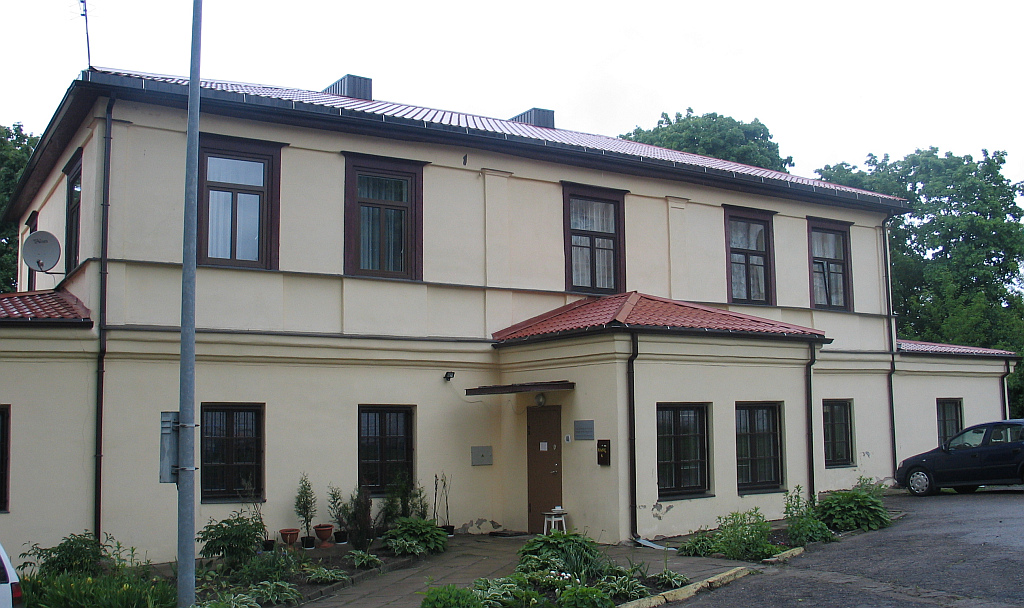
In a pivotal vision, our Lord revealed an image of Himself to Faustyna and told her to have a painting made with that image. But Faustyna could not paint. Fr. Sopoćko’s upstairs neighbor happened to be a painter named Eugeniusz Kazimirowski. Faustyna described her vision to the man, and the painter created the first famous image of the Divine Mercy.
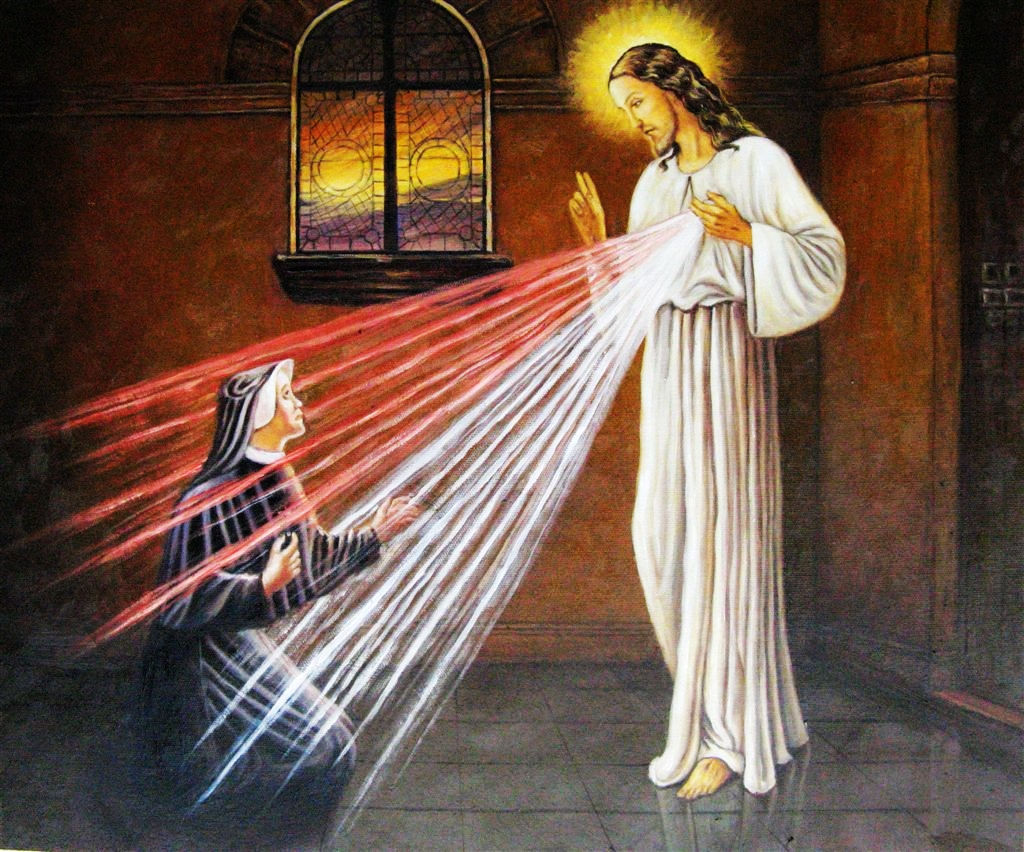
In this image, rays of white and red light emanate from Jesus’ heart, as visible signs of His love and mercy. The words, “Jesus, I trust in You” have been painted at the bottom of this image in innumerable languages for people all over the world.

Eugeniusz Kazimirowski

Faustyna’s diary is a mystical masterpiece, one of the most moving and intimate descriptions of Jesus’ interactions with a human being in prayer. Faustyna described these encounters as “Divine Mercy in my soul,” a phrase which she wrote on the front page of her diary.
Her mystical visions increased near the end of her life. When Fr. Sopoćko visited her in the hospital for the final time, he noted that she was very ill but apparently in a spiritual ecstasy. Faustyna died at the age of thirty-three.
With Fr. Sopoćko’s support, the message of Divine Mercy had already begun to spread in Vilnius. As the Polish people experienced the horror of World War II and the spiritual devastation of communist control, they began to privately pray the chaplet of Divine Mercy and pray before the Divine Mercy image and using holy cards. However, faulty translations of Faustyna’s diary caused some Church leaders to question and even condemn the devotion for many years. This did not change until a Polish pope ordered a reinvestigation of Faustyna’s life and writings in the late twentieth century,
But Fr. Sopoćko was fully convinced that the Divine Mercy devotion was sent by God and was exactly what our troubled world needed during the violence of the twentieth century. For the rest of his long life, he wrote about God’s mercy, preached about it, and kept this powerful message alive as best he could. Then, in God’s perfect time and with the help of Pope Saint John Paul II, devotion to God’s mercy exploded around the world.
Divine Mercy Sunday is now celebrated on the second Sunday after Easter, and several new religious orders and institutions have arisen which are dedicated to promoting devotion to Divine Mercy. Copies of the writings of both Saint Faustyna and Blessed Michał are now easy to find, and many places associated with the life of Saint Faustyna have become popular pilgrimage sites.
But what both of these holy saints would most encourage you to do is far easier than taking a trip to Poland. Simply go to your nearby church (or stay wherever you are), pray the Divine Mercy Chaplet at 3 pm every day of the week, and meditate on God’s great love and mercy for all of us.



